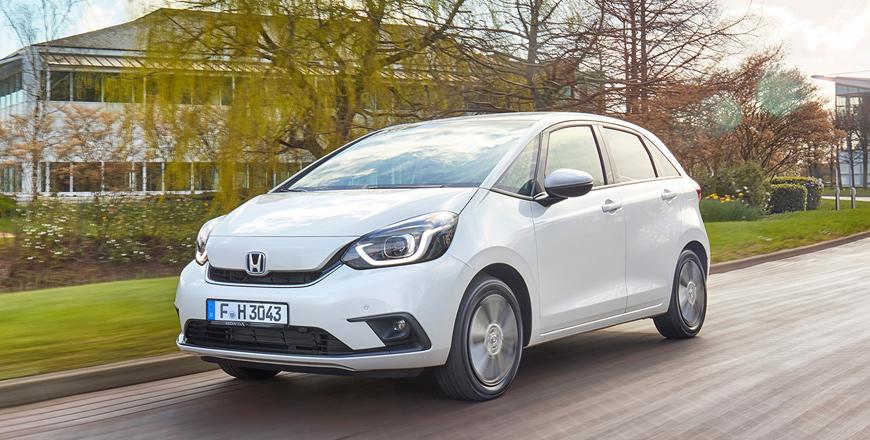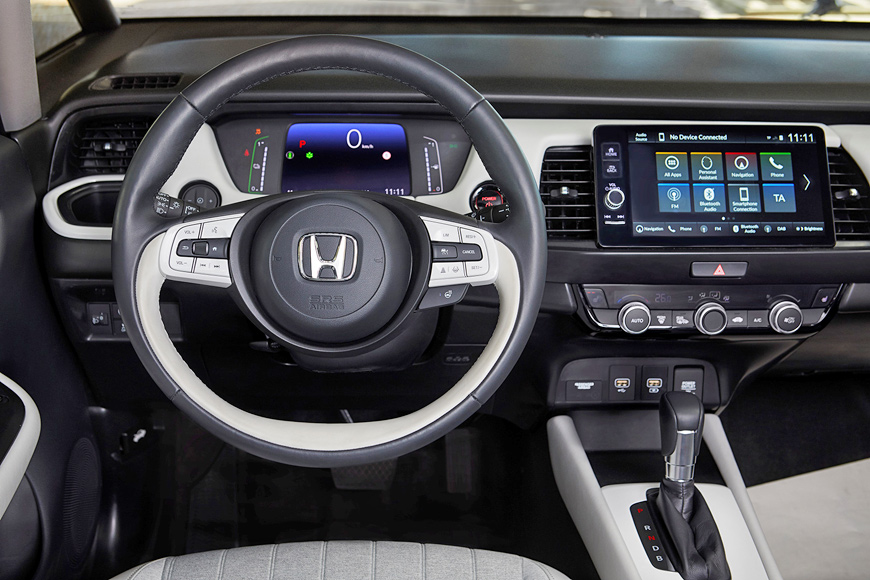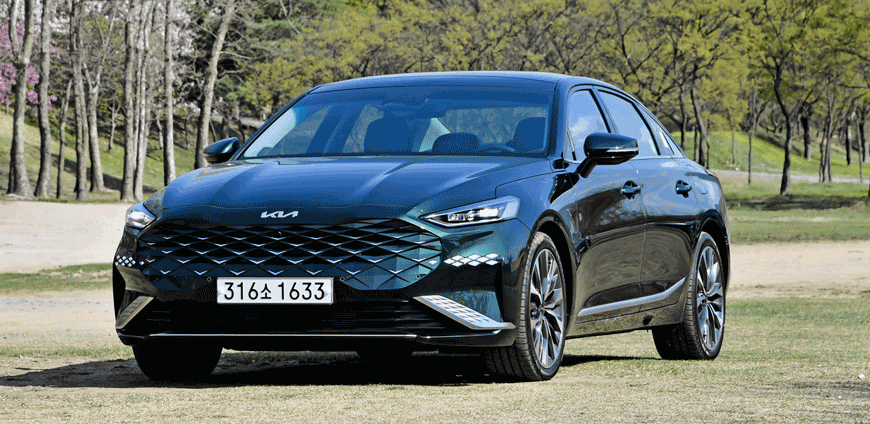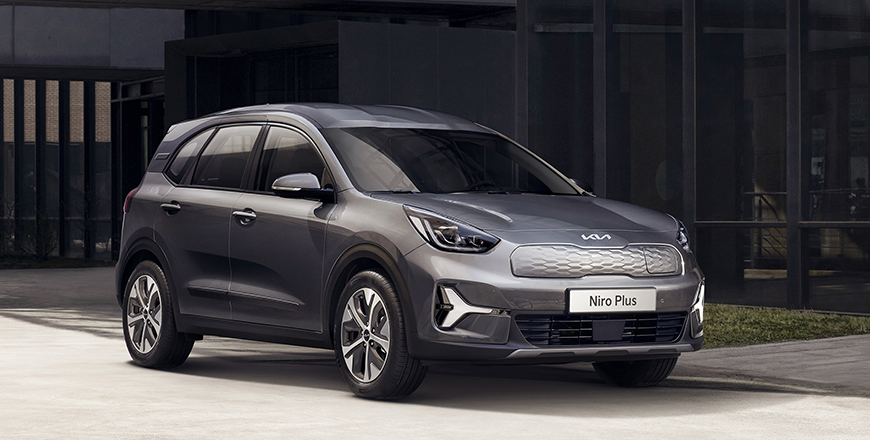You are here
Honda Jazz E:HEV: Fun, frugal and fit for purpose
By Ghaith Madadha - May 24,2021 - Last updated at May 24,2021

Photos courtesy of Honda
Launched early last year, the fourth generation of the modern incarnation of the Honda Jazz is a small but practical city car, built from the ground up with electrification firmly in mind. Also known as the Honda Fit in some markets, and available with regular petrol combustion engine in other markets, the new Jazz is only available in hybrid guise in Europe and Jordan. An unconventional yet mechanically less complicated and compact design, the Jazz’s hybrid system delivers higher mechanical energy efficiency in a versatile and fun package.
A small 4 metre long hatchback, the Jazz’ design and clever packaging, however, take a leaf from the MPV playbook with its narrow yet tall body, comparatively long wheelbase and combination of low bonnet and large windscreen, rising at a near uniform angle to create an airy ambiance and unobstructed front visibility. Cleaner in design with less cluttered surfacing and lines than its predecessor, the new Jazz has a classy and more mature styling sensibility, with more conservative yet high-set rear lights, discrete side creases and a subtly snouty face.
Innovative electrification

Nestled behind its slim grille, the Jazz E:HEV drive-line set-up consists of a naturally-aspirated 1.5-litre 4-cylinder engine and two electric motors in front, and a battery pack at the rear. Driving like an EV in most conditions, the Jazz E:HEV has three operating modes, chosen automatically for prevailing conditions. Its default driving mode is one where the petrol engine powers the first electric motor, which then powers a second more powerful and high revving electric motor to the drive the front wheels, and which also charges the hybrid system battery.
Operating as a generator most often, the Jazz E:HEV’s combustion engine rarely drives the front wheels directly, except at around speeds of 80-120kmh, when it is engaged through a single-speed clutch mechanism, in lieu of a full gearbox. Described as an e-CVT system, the Jazz’s simplified transmission limits the engine’s direct driving involvement. Meanwhile, the Jazz’s batteries are able to provide limited low speed pure EV driving — mostly at lower speeds — and can supplement the petrol engine with more power and a significant torque increase during its narrow direct drive range.
Confident delivery

Developing 96BHP at 5,500-6,400rpm and 96lb/ft torque at 4,500-5,000rpm from its petrol engine, the Jazz E:HEV’s effective maximum output is the 107BHP and substantial 186lb/ft developed by its electric drive motor. With maximum petrol engine direct driving power only available at a specific point, one has more rewarding and progressive delivery when it is driving the front wheels, but this is often supplemented by electric power. Through briskly driven, steep and sustained hill climbs, the Jazz holds up better than many rivals with quick electric charge recuperation.
That said, the Jazz but will face points where it drives on either petrol or electric motor when the battery is depleted on such demanding hill climbs. However, for most circumstances it operates exactly as intended. Smooth, confident and versatile when overtaking or on short steep inclines, the Jazz’s is characterised by its generous torque output. Flooring the accelerator from standstill, there is undoubtedly some torque steer tug owing to how instant and abundant is its twisting force, but this is brief and not exaggerated, and allows for relatively quick 9.4-second 0-100km/h acceleration.
Maneuverable and efficient
Capable of a top speed of 175km/h, the Jazz is a comfortable highway drive for its compact segment. Driving with more combustion engine input as a generator at higher speeds, the
Jazz E:HEV’s innovative hybrid design is set-up for particular efficiency in town and in extra-urban conditions. With reduced frictional losses and with the engine operating in its most efficient load and rev range when acting as a generator, the E:HEV delivers frugal fuel consumption under moderate real world daily driving conditions, and is rated at 3.6l/100km on the combined cycle.
Light weight by comparison to many similar hybrids and EVs at 1,230kg owing to its unique hybrid system, smaller battery pack and abbreviated mechanical transmission, the Jazz E:HEV is a more eager, agile and maneuverable drive than much of the competition. Tidy turning into corners with its light and quick 2.51-turn steering, the Jazz can be easily placed on road with its low bonnet, big windscreen, upright driving position and compact frame. It also benefits from slim 185/60R15 tyres, which also help provide decent steering feel and a forgiving ride comfort.
Versatile package
Nippy through narrow winding routes and eager to turn on the proverbial dime, the Jazz is at home through narrow sprawling A- and B- roads or on city streets. Easy to park and manoeuvre in such conditions, the Jazz’s handling is meanwhile confidently agile through hairpin corners. Well controlling body lean, the Jazz delivers good grip, but with slim tyres, short wheelbase and weighty battery at the rear, one can still adjust the rear to tighten a cornering line. Stable ion highway, its ride is meanwhile settled, vertically well controlled and comfortable over most road imperfections.
A well-packaged car that reconciles compact dimensions with a spacious interior, the Jazz provides a comfortable, well-adjustable driving position and above average rear space that accommodates taller passengers better than many larger cars. Luggage area is meanwhile versatile, and almost MPV-like in its versatile configurability; with rear seats folded down or folded up to create two separate compartments. Airy and with good visibility and equipment levels, the Jazz’s cabin is reasonably well equipped and user-friendly in instrumentation, storage space and ergonomics. Design is meanwhile fresh, modern and of good quality without being either low rent or luxurious.
TECHNICAL SPECIFICATIONS
Engine: 1.5-litre, transverse 4-cylinders, & electric motor
Bore x stroke: 73 x 89.5mm
Compression ratio: 13.5:1
Valve-train: DOHC, 16-valve, continuously variable valve timing
Gearbox: Single-speed, e-CVT automatic, front-wheel-drive
Petrol engine power, BHP (PS) [kW]: 96 (97) [72] @5,500-6,400rpm
Electric motor power, BHP (PS) [kW]: 107 (109) [80]
Petrol engine torque, lb/ft (Nm): 96.6 (131) @4,500-5,000rpm
Electric motor torque, lb/ft (Nm): 186.6 (253)
0-100km/h: 9.4-seconds
Maximum speed: 175km/h
Fuel consumption, urban/extra-urban/combined: 2.4-/
4.3-/3.6-litres/100km
CO2 emissions: 87g/km
Fuel capacity: 40-litres
Length: 4,044mm
Width: 1,694mm
Height: 1,515mm
Wheelbase: 2,517mm
Track, F/R: 1,485/1,475mm
Minimum ground clearance: 136mm
Luggage volume, min/max: 304-/1,205-litres
Doors/seats: 5/5
Kerb weight: 1,230kg
Steering: Electric-assisted rack and pinion
Lock-to-lock: 2.51-turns
Turning circle: 10.7-metres
Suspension, F/R: MacPherson struts/torsion beam
Brakes F/R: Ventilated discs/discs, regenerative braking
Tyres: 185/60R15
Price, on-the-road, with 3rd party insurance: JD22,900
Related Articles
A thoroughly better appointed, equipped and designed vehicle than it has ever been since its 2002 introduction, the Kia Sorento has over the
Making it global debut in 2021 and introduced to regional markets in recent weeks as part of a multimodel hybrid electric vehicle launch, th
Introduced globally early last year, the Kia Niro Plus arrived just months after the late 2021 launch of an all-new second generation


















